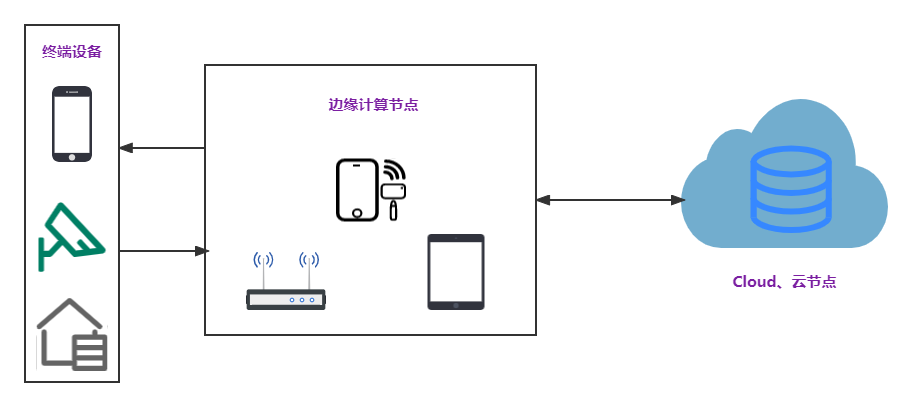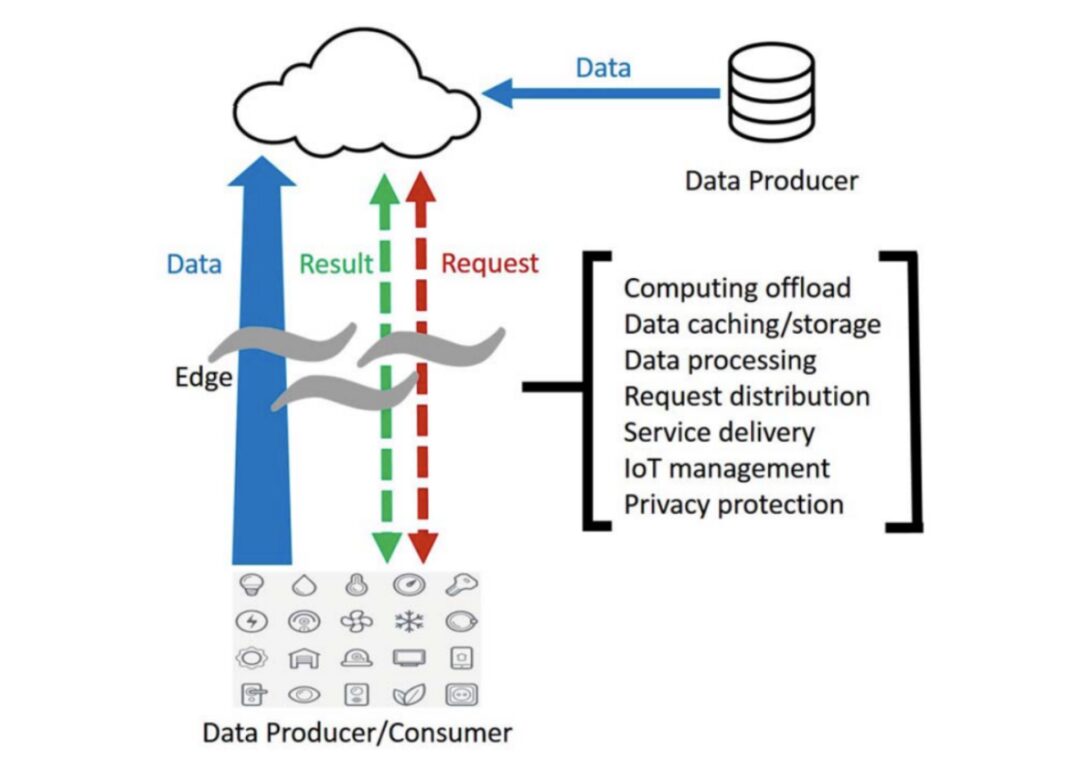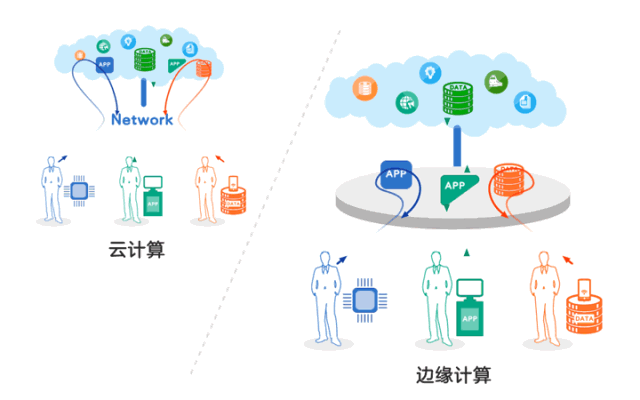Click the blue text to follow us
What Is Edge Computing?
Why Use Edge Computing?
How Does Edge Computing Change Our Lives?
With these questions, let’s take a look below
What Is Edge Computing?
Edge computing is a distributed computing concept that integrates artificial intelligence into edge devices (also known as edge nodes), allowing edge devices to process and analyze data in real-time near the data collection source. In edge computing, data does not need to be uploaded directly to the cloud or centralized data processing systems; devices like smartphones, computers, and routers can serve as carriers for edge computing. They collaborate with cloud servers to provide cloud-edge synergy for application scenarios, as illustrated in the typical architecture shown in the image.

Why Use Edge Computing?
Edge computing outperforms cloud processing when dealing with time-sensitive events, as it does not require data to be transmitted to the cloud for processing and analysis. It can process data in real-time near the data aggregation point, reducing the pressure on networks and servers, minimizing processing time, and enhancing rapid response capabilities.
For example, to make autonomous vehicles a reality, cars need to react in real-time to external factors. If an autonomous vehicle is driving on the road and a pedestrian walks in front of it, the car must stop immediately. It does not have time to send a signal to the cloud and wait for a response; it must be able to process the signal instantly. At this time, edge computing, being close to the endpoint, can process data in real-time and react quickly.

Image source: https://blog.csdn.net/linjingyg/article/details/121872878
How Does Edge Computing
Change Our Lives?
In the era of the Internet of Things, edge computing focuses on computing, processing, optimizing, and storing data at the edge of the IoT. With the development of the Internet of Things, the applications of edge computing are extensive and have been used in smart cities, smart homes, smart healthcare, autonomous driving, and smart manufacturing.
Smart Transportation: The application of edge computing in intelligent transportation includes autonomous driving, smart connected vehicles, and traffic management. Various transportation tools in daily life generate a lot of data (including text, images, videos, etc.) that need real-time processing. Edge computing technology can greatly enhance the efficiency of traffic order management and transportation. For example, various sensors in vehicles collect a lot of data, and with edge computing, data can be processed closer to the vehicle, reducing latency and controlling the vehicle more intelligently.

Image source: https://baike.baidu.com/pic/%E6%99%BA%E6%85%A7%E4%BA%A4%E9%80%9A/13579098/1/242dd42a2834349bd06f2985c6ea15ce36d3be41?fr=lemma&ct=single#aid=1&pic=242dd42a2834349bd06f2985c6ea15ce36d3be41
Smart Healthcare: Healthcare is a major issue related to national interests and people’s livelihoods. According to statistics, 80% of the population in China is distributed in underdeveloped areas with insufficient medical resources, while high-end medical equipment is mostly concentrated in large cities, leading to extremely uneven medical development. This makes it difficult and expensive for people in underdeveloped areas to see a doctor, and difficult diseases cannot be diagnosed and treated by experts in a timely manner. Utilizing technologies such as the Internet, cloud computing, and edge computing to establish a complete remote medical mechanism and platform plays a significant role in the interconnected sharing of medical resources, improving healthcare levels in remote areas, and achieving medical equity.
What Is the Difference Between
Edge Computing and Cloud Computing?
Edge computing and cloud computing collaborate and complement each other to jointly enable digital transformation in industries. Edge computing is close to the device end, collecting data for cloud applications to support big data analysis; cloud computing also outputs business rules to the edge through big data analysis for execution and optimization. A common pain point in big data applications is the lack of suitable data collection. Edge computing can provide the most accurate and timely data sources for the big data algorithms of core servers. Cloud computing focuses on non-real-time, long-cycle data big data analysis, providing a basis for business decision support; edge computing focuses on real-time, short-cycle data analysis, better supporting local business’s real-time intelligent processing and execution. Thus, it can be seen that edge computing is not intended to replace cloud computing but to extend and complement it, providing a better computing platform for mobile computing, the Internet of Things, and more.

Image source: https://www.toutiao.com/i6888849192354054659/?timestamp=1646380697&app=news_article_lite&use_new_style=1&req_id=2022030415581601015120421422035AEB&share_token=e867a2c7-bfce-4daa-9330-9f5c3bc5f9b9&group_id=6888849192354054659
Cloud-Edge Collaboration Powered by Edge Computing
With the continuous maturity of technologies such as 5G, AR/VR, and cloud computing, along with the arrival of the industrial Internet era, the demand for “large connectivity, low latency, and high bandwidth” is becoming increasingly strong and urgent. Edge computing has become an important part of this, increasingly required by various industries along with cloud computing, referred to as “cloud-edge collaboration.”
Cloud-edge collaboration is a crucial pillar of the industrial Internet, accelerating the realization of industrial intelligent transformation, assisting the traditional energy industry in upgrading to an energy Internet, and empowering smart homes with new vitality, achieving functions such as appliance control, safety protection, video surveillance, timed control, environmental monitoring, scene control, and visual intercom, thus aiding the development of smart cities, smart healthcare, smart transportation, and smart agriculture.
One typical application is public safety in smart cities. As an important source of video data, video capture cameras can be seen in every corner of the city. By completing some or all of the computing tasks closer to the cameras at the edge, video analysis systems can achieve lower latency with lower bandwidth consumption to complete video analysis tasks. The cloud computing center is responsible for collecting data from widely distributed edge nodes, sensing the operational status of various systems, and issuing reasonable scheduling instructions for traffic signals and monitoring systems through big data and artificial intelligence algorithms, thus improving the operational efficiency of the systems.

In the oil industry, massive production data is generated at various critical stages of oil and gas extraction, transportation, and storage. In the traditional model, a large amount of manpower is needed, resulting in high costs, low efficiency, significant delays, and untimely information. The introduction of edge computing precisely addresses these shortcomings. The data processed and analyzed after interaction with the cloud not only has high value but also greatly saves network bandwidth resources, providing significant advantages for further big data analysis, mining, and application.
References:
https://blog.csdn.net/linjingyg/article/details/121872878
https://m.toutiao.com/is/N8moEuT/
https://m.toutiao.com/is/N8uLcu2/
https://blog.csdn.net/kwame211/article/details/103821669
https://zhuanlan.zhihu.com/p/126339967
https://blog.csdn.net/weixin_41033724/article/details/106205016?utm_medium=distribute.pc_aggpage_search_result.none-task-blog-2~aggregatepage~first_rank_ecpm_v1~rank_v31_ecpm-30-106205016.pc_agg_new_rank&utm_term=%E8%BE%B9%E7%BC%98%E8%AE%A1%E7%AE%97%E6%99%BA%E6%85%A7%E5%8C%BB%E7%96%97&spm=1000.2123.3001.4430
http://news.idcquan.com/news/186315.shtml
https://www.jinse.com/news/blockchain/1153367.html

WeChat Official Account | nscc_jn
Welcome to follow | National Supercomputing Center Jinan